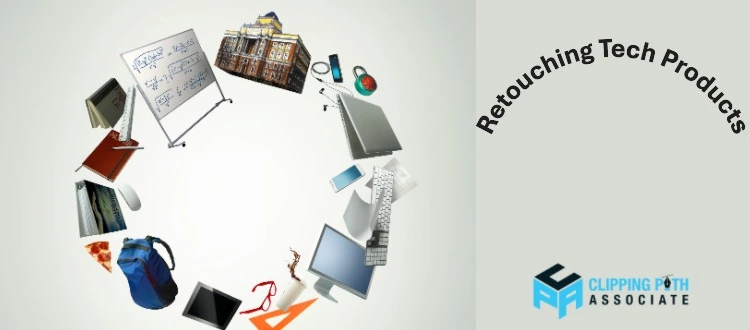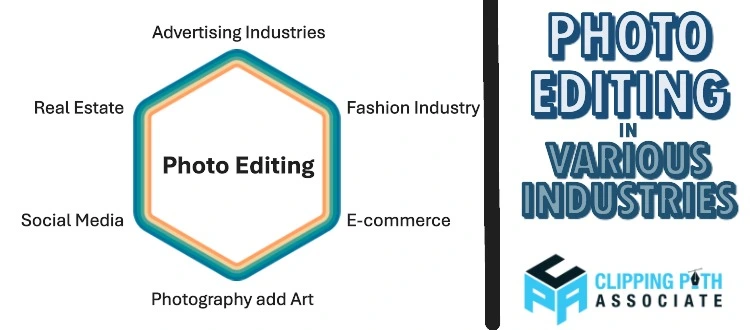Theodore Lowe, Ap #867-859
Sit Rd, Azusa New York
Find us here
What Makes Tech Product Retouching So Visually Demanding? Explore Now

The secret lies in the meticulous process of tech product retouching. This art form is more demanding than you might think. It requires a keen eye for detail, an understanding of the product's features, and the ability to make it visually irresistible to you, the consumer.
We’ll dive into what makes tech product retouching such a visually demanding task. By the end, you'll not only appreciate the effort behind those stunning images but also understand how they influence your buying decisions. Get ready to see the unseen magic behind the tech products you love!
Importance Of Visual Appeal
Visual appeal plays a crucial role in tech product retouching. It determines how a product attracts and engages potential customers. A visually appealing product image can significantly impact consumer perceptions and decisions. For tech products, this means clean lines, vibrant colors, and precise details. These elements can highlight the innovation and quality of a product. The right visual appeal can set a product apart in a crowded market.
First Impressions Matter
The first impression of a tech product can make or break interest. A striking image can immediately draw attention. It can spark curiosity and create a sense of desire. People often judge a product's quality based on its appearance. A polished image can convey professionalism and trustworthiness. Capturing attention quickly is vital in the fast-paced digital world.
Competitive Market Standards
The tech market is highly competitive. Companies constantly strive to outperform each other. High-quality product images have become a standard expectation. They reflect a brand's commitment to excellence and attention to detail. Meeting these standards can enhance a brand's reputation. Falling short can result in losing potential customers. Visual appeal can be the difference between standing out or blending in.
Challenges In Tech Product Retouching
Retouching tech products can be a visually demanding task that requires a keen eye and technical expertise. But what makes it so challenging? You might think it's just about making a gadget look good, but there's more to it than meets the eye. From the complexity of product design to maintaining consistency across different platforms, and meeting high-resolution requirements, each aspect presents unique hurdles that can test even the most seasoned professionals.
Complexity Of Product Design
Tech products often boast intricate designs that can be difficult to retouch. Think about the sleek curves of a smartphone or the detailed components of a smartwatch. Each product has its nuances, requiring meticulous attention to detail. Have you ever tried capturing the essence of a glossy surface without losing its reflective quality? It’s a balancing act that demands precision. Understanding the design intricacies is crucial for accurate retouching.
Consistency Across Platforms
Imagine viewing the same tech product on a website, social media, and in print. The colors and details must remain consistent across all platforms. This consistency is not easy to achieve, given the varying display settings and resolutions. Have you ever noticed how the same image can look different on your phone compared to your laptop? Ensuring uniformity in appearance is essential for brand integrity. This means adjusting images for different formats while preserving the core aesthetic.
High Resolution Requirements
Tech products need to look sharp and clear, often requiring high-resolution images. But high resolution comes with its own set of challenges. Enlarging an image can reveal flaws that need correcting without compromising quality. Have you ever wondered why zooming in sometimes reveals pixelation? Maintaining high quality while retouching demands skill and patience. It's about enhancing without overdoing it, ensuring that every detail remains crisp and clear.
So, why does tech product retouching demand so much? It's the complexity, the need for consistency, and the high resolution that make it a meticulous art form. Next time you admire a tech product image, remember the skilled hands behind it. Have you considered how these challenges might affect your own projects? Understanding them can be the first step to improving your retouching skills.
Techniques For Effective Retouching
Capturing tech products requires high precision and attention to detail. Perfect lighting and angles showcase the product’s features. Every detail matters to highlight functionality and appeal.
Retouching tech products is an art that demands precision and creativity. The secret lies in using effective techniques to make these products look flawless while maintaining authenticity. Let's explore some key techniques that can transform your tech product images from ordinary to extraordinary.
Color Correction
Color correction is crucial in tech product retouching. It ensures that the product's colors match what customers expect to see. Imagine buying a smartphone online, only to find its color completely different upon delivery. Disappointing, right? By adjusting brightness, contrast, and saturation, you can portray the product's true colors, enhancing customer trust and satisfaction.
Shadow And Reflection Management
Shadows and reflections add depth and realism to product images. However, they can be tricky to manage. Too much shadow can obscure details, while inadequate reflection may make the product appear flat. Consider how a well-placed shadow can emphasize a laptop's sleek design, making it more appealing. Balancing these elements can significantly impact the visual appeal of your images.
Detail Enhancement
Tech products often feature intricate details that need highlighting. From the texture of a smartwatch band to the glossy finish of a tablet, every detail matters. Enhancing these details can make your product stand out, catching the viewer’s attention instantly. Have you ever seen a product image that made you pause and admire its craftsmanship? That's the power of detail enhancement. Remember, effective retouching is not just about making products look good. It's about creating a visual experience that speaks to your audience and drives them to action. How can you implement these techniques in your next project?
Tools And Software
Tech product retouching demands precision and attention to detail. Flawless images require skilled use of tools and software. Each pixel matters to create a perfect visual effect.
In the world of tech product retouching, the right tools and software can make all the difference. Mastering these tools demands precision and creativity, elevating the visual appeal of tech products. Whether you're just starting out or have years of experience, understanding the capabilities of different software can significantly enhance your workflow.
Leading Retouching Software
Adobe Photoshop often tops the list when discussing retouching software. Its extensive features and intuitive interface make it a staple for professionals. You can easily adjust lighting, modify colors, and enhance details to bring out the best in tech products. Capture One is another powerful tool, particularly favored for its color correction capabilities. Its advanced features allow you to maintain color accuracy, a critical element when retouching tech products. This software also supports tethered shooting, which can streamline your workflow during photoshoots.
Emerging Ai Technologies
AI technologies are transforming the retouching landscape. Software like Luminar Neo utilizes AI to automate repetitive tasks, saving you time and effort. With AI, you can achieve precise edits without spending hours manually adjusting every detail. Have you tried using AI-based tools for retouching yet? They can elevate your work by ensuring consistency and precision across all your projects. By incorporating these tools into your process, you can focus more on creativity and less on tedious tasks. Incorporating the right tools and software into your retouching process can significantly enhance the visual quality of tech products. What tools do you find indispensable in your workflow? Share your experiences and discover new ways to refine your skills.
Role Of The Retoucher
The role of the retoucher is vital in tech product photography. Retouchers enhance images to make them appealing and realistic. They work closely with photographers and designers to achieve the desired look. Their attention to detail ensures that the final product image is flawless. Retouchers transform ordinary images into captivating visuals.
Skillset And Expertise
Retouchers need a keen eye for detail. They must understand color, light, and composition. Their expertise in using software like Photoshop is essential. They adjust shadows, highlights, and textures to create balance. Their skillset helps bring out the best in each product image. They ensure the tech product looks as good as possible.
Creative Problem Solving
Retouchers often face unique challenges with tech products. They must creatively solve issues like reflections or unwanted shadows. They think outside the box to enhance the product's visual appeal. Their creativity helps overcome obstacles in retouching. This makes the product stand out in a competitive market.
Future Trends In Product Retouching
The world of product retouching continues to evolve rapidly. New technologies emerge and redefine how we perceive and enhance images. As the demand for high-quality visuals grows, understanding future trends becomes crucial. The integration of technology in retouching processes offers endless possibilities. This section explores these upcoming trends, focusing on automation, AI, and sustainability.
Automation And Ai Integration
Automation tools simplify repetitive tasks in product retouching. These tools save time and effort for designers. AI algorithms enhance image quality by detecting imperfections. They offer precise adjustments that align with brand aesthetics. This reduces the manual workload and speeds up the editing process. As AI continues to improve, it promises even more refined results.
Sustainability In Visual Design
Visual design now embraces sustainability. This trend reflects the growing environmental awareness among consumers. Designers use eco-friendly tools and methods to create digital art. Sustainable design practices reduce the carbon footprint of digital processes. They align with consumer values and increase brand loyalty. As sustainability becomes more important, it influences retouching trends.
Frequently Asked Questions
Why Is Tech Product Retouching Challenging?
Tech product retouching is challenging due to the intricate details and reflective surfaces. These elements require precise adjustments to maintain realism. High-resolution images demand meticulous attention to color accuracy and texture. The process ensures that every aspect of the product appears flawless and appealing to potential consumers.
What Tools Are Used For Retouching Tech Products?
Professionals use advanced software like Adobe Photoshop and Lightroom for tech product retouching. These tools offer features for color correction, detail enhancement, and texture refinement. They help achieve a polished and professional look. Specialized plugins can further enhance capabilities, ensuring high-quality results.
How Does Lighting Affect Retouching?
Lighting is crucial in tech product retouching as it affects texture and color accuracy. Proper lighting setup minimizes shadows and highlights essential features. Consistent lighting helps maintain uniformity across images. Adjusting brightness and contrast during retouching enhances the product's visual appeal and highlights its unique design.
What Are Common Retouching Mistakes?
Common retouching mistakes include over-editing, which can make products look unrealistic. Ignoring color consistency can result in mismatched tones. Poor attention to detail might overlook blemishes or reflections. Ensuring a balanced approach and thorough inspection avoids these pitfalls and maintains the product's authenticity.
Conclusion
Tech product retouching demands attention to detail. Every pixel counts. Colors must pop. Shadows need precision. Each image tells a story. Viewers want clarity and appeal. Experts focus on quality. They refine textures and edges. The aim? Perfect visuals that captivate.
This makes the task demanding. Designers balance time and skill. Creativity meets technology. It's an art form. Challenges arise, but the outcome matters. High-quality images boost engagement. They enhance user experience. Visual demand drives results. It’s about creating impact. The right retouching transforms tech products.
They shine. They impress. They sell.
Related blog posts
Importance of Photo Editing in Various Industries: Transformative Impact
Imagine scrolling through a website and stumbling upon a blurry, poorly-lit product photo. Chances are, you might click away, right?


